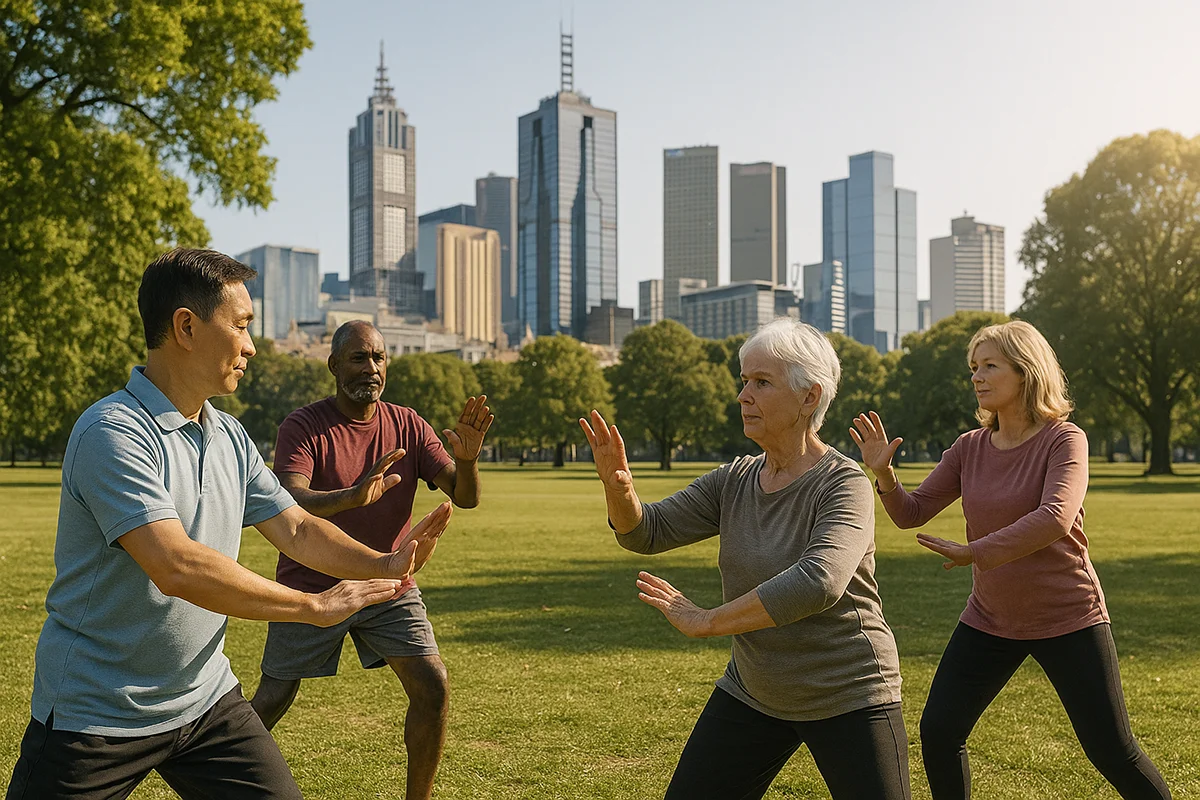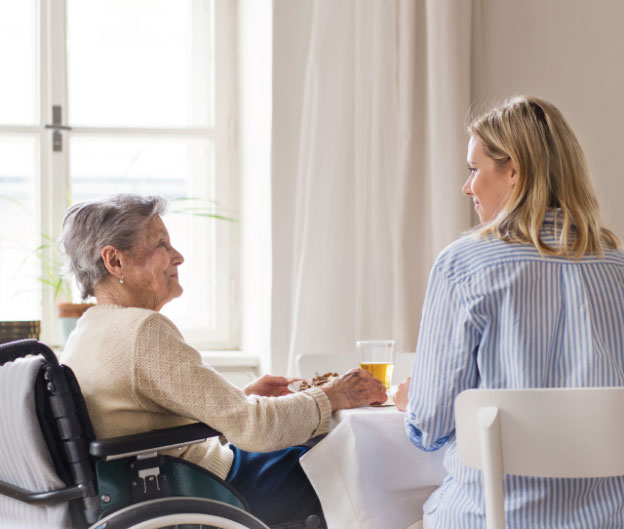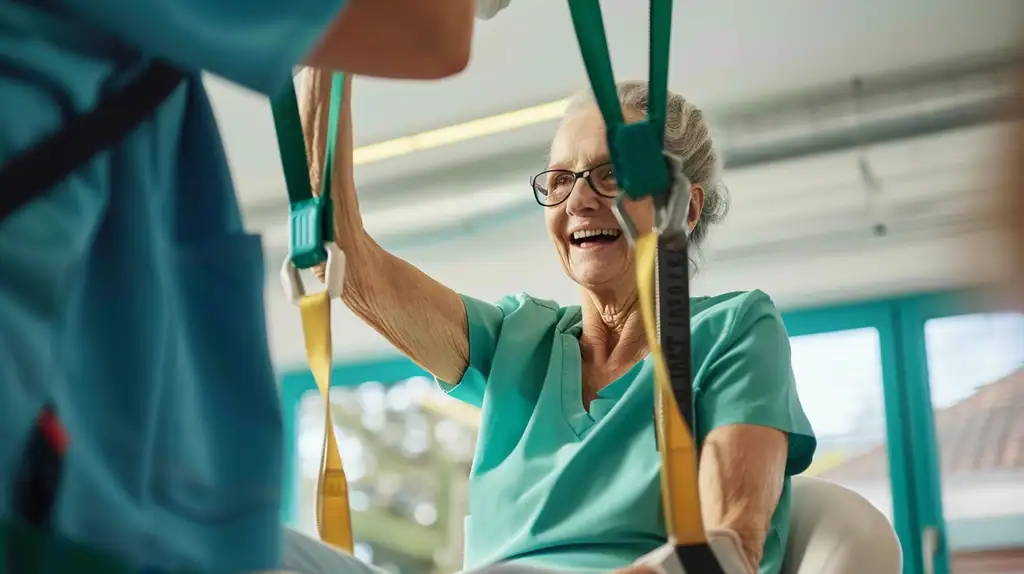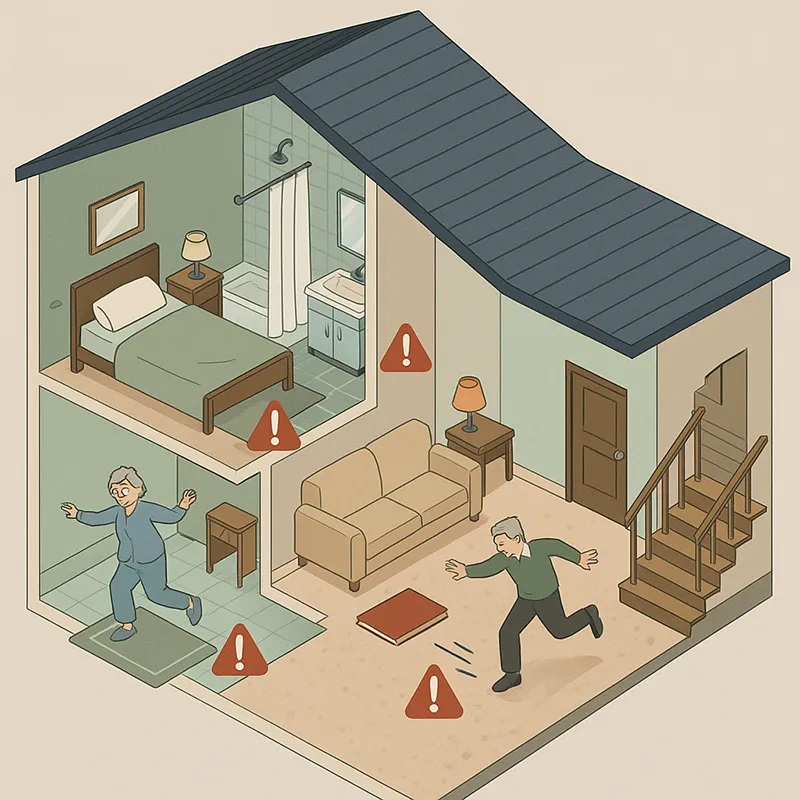Sub-article 1 in our Australian Falls Guidelines 2025 series
1. Why This Guide Matters
Quick reality check: More than 80 % of Australians aged 65+ live with at least one chronic disease¹, yet nearly 60 % fall short of basic activity targets². Community fitness programs (CFPs)—walking clubs, tai chi in the park, chair-yoga at the library—offer a proven, affordable fix. Just 2–3 h of balance + strength work a week can cut falls by roughly half³ and delivers mood benefits 1.5× stronger than medication⁴.
2. Key Benefits at a Glance
| What Improves | Typical Change | Why It Matters |
|---|---|---|
| Mobility & fall risk | Timed-Up-and-Go time ↓ ≈ 1 s; chair-stands ↑ ≈ 2 reps in 12 wk⁵ | Faster, steadier walking; fewer trips & falls |
| Muscle strength | Grip strength ↑ 1.3–1.5 kg⁶ | Better daily-living skills (opening jars, carrying shopping) |
| Mental health | 2 × lower clinical depression in group exercisers⁴ | Exercise + friends = happier ageing |
| Chronic-disease control | Lower HbA1c, blood pressure & joint pain⁷ | Fewer meds, better quality of life |
| Longevity | Inactive seniors face 20–30 % higher mortality risk⁸ | Regular CFPs close that gap |
3. Program Menu: Choose Your Move
| Format | Real-world Example | Perfect For |
|---|---|---|
| Walking groups | Heart Foundation Walking⁹ | Beginners, social butterflies |
| Tai Chi in parks | Council “Tai Chi for Better Balance”¹⁰ | Balance & joint health |
| Chair Yoga / Pilates | COTA “Strength for Life”¹¹ | Seniors with mobility limits |
| Green Gyms | Landcare Green Gym¹² | Garden lovers (“exercise by stealth”) |
| Exergaming hubs | Library VR balance pods¹³ | Tech-savvy all ages |
| Subsidised starter pack | Exercise Right for Active Ageing—12 classes¹⁴ | Over-65s on a budget |
Tip: Search “local community fitness programs + suburb” or browse the NSW Active & Healthy directory¹⁵.
4. Why Group Exercise Works Better
- Accountability: Turning up for friends keeps you moving.
- Motivation loop: Seeing peers succeed fuels your own progress.
- Expert eyes: Qualified instructors adapt moves for every fitness level.
- Social cure: Group bonding halves loneliness and lifts mood.
5. Design Principles for Inclusive Programs
- ≤ 10 min travel time—cuts drop-outs¹⁶.
- Bilingual leaders & culturally familiar music for CALD groups¹⁷.
- Adaptive kit—chair supports, hand-pedal bikes—for people with disabilities¹⁸.
- Tiered intensity: seated ➝ supported standing ➝ independent.
- Falls-Guideline target: Build 2–3 h/week of balance-and-strength to match Level 1A advice³.
6. Common Hurdles & Easy Fixes
| Hurdle | Why It Happens | Quick Fix |
|---|---|---|
| Transport | Long or unsafe journeys deter seniors¹⁶ | Host classes in libraries, halls, parks; daylight slots |
| Cost | Fixed income limits options¹⁹ | Use council sport vouchers & Active Australia grants²⁰ |
| Motivation dip | Solo exercisers relapse after 3 mo⁴ | Buddy sign-ups, WhatsApp check-ins, milestone badges²¹ |
7. Alignment with the Australian Falls Guidelines 2025
Guideline 1A (Community Care): *“Support all older people to undertake 2–3 hours of balance- and strength-focused exercise per week.”*³
CFPs tick this box—especially tai chi, resistance-band circuits and chair-yoga. Add quarterly OT home-safety talks to build a multifactorial prevention plan²².
8. Quick-Start Checklist
For Participants
- Pick your style: Walking, tai chi, Pilates, Green Gym, VR fitness.
- Bring a friend for instant accountability.
- Track progress: Time your Timed-Up-and-Go today; re-test in 12 weeks.
For Providers
- Audit local gaps (balance classes? CALD sessions?).
- Train staff in older-adult exercise & falls prevention.
- Promote first-class-free offers through GP clinics and Facebook Seniors groups.
FAQ
What counts as a community fitness program?
Any organised, local group activity—walking, yoga, tai chi, gardening or exergaming—led by a trained facilitator.
How much does it cost?
Many councils run free community fitness programs; typical classes cost AUD 5–10. The federally funded Exercise Right for Active Ageing scheme offers 12 subsidised sessions¹⁴.
Is it safe with diabetes or heart disease?
Yes. Programs start with a health screen and can be tailored. Always check with your GP if unsure.
Conclusion
Community fitness programs turn solid science into an enjoyable weekly habit. Join a class today, and you’ll gain stronger muscles, brighter mood and fewer falls—right in line with the Australian Falls Guidelines 2025.
Reference List
- PMC7829564 – Global ageing & chronic-disease burden
https://pmc.ncbi.nlm.nih.gov/articles/PMC7829564/ - Australian Commission on Safety & Quality – Updated Falls Guidelines 2025
https://www.safetyandquality.gov.au/newsroom/latest-news/preventing-harm-falls-updated-falls-guidelines - WHO Fact Sheet – Physical Activity (Timed-Up-&-Go / chair-stand data)
https://www.who.int/news-room/fact-sheets/detail/physical-activity - Sydney University, Charles Perkins Centre – Group exercise motivation study
https://www.sydney.edu.au/charles-perkins-centre/news-and-events/news/2024/07/10/group-exercise-the-silver-bullet-for-exercise-motivation.html - BMC Public Health 2022 – Exercise vs medication for mental-health outcomes
https://bmcpublichealth.biomedcentral.com/articles/10.1186/s12889-022-13832-3 - Exercise & Sports Science Australia – Exercise Right for Active Ageing
https://exerciseright.com.au/programs/exercise-right-for-active-ageing/ - PMC8852913 – Engaging CALD communities in physical activity
https://pmc.ncbi.nlm.nih.gov/articles/PMC8852913/ - Better Health Channel (Vic) – Exercise & mental health
https://www.betterhealth.vic.gov.au/health/healthyliving/exercise-and-mental-health - Adaptive Fitness & Disability – Innow article
https://www.innow.org/2023/09/07/adaptive-fitness-wellness-for-people-with-disabilities-through-exercise/ - COTA SA – Strength for Life program
https://cotasa.org.au/programmes-and-services/strength-for-life - Landcare Green Gym – Volunteer gardening fitness sessions
https://landcareaustralia.org.au/our-work/green-gym/ - News-Medical – Community exergaming effectiveness study
https://www.news-medical.net/news/20220323/Study-shows-effectiveness-of-community-based-group-exercise-programme-for-older-people-with-mobility-limitations.aspx - Heart Foundation Walking
https://walking.heartfoundation.org.au/ - NSW Active & Healthy Directory
https://www.activeandhealthy.nsw.gov.au/ - Mayo Clinic – Exercise & chronic disease
https://www.mayoclinic.org/healthy-lifestyle/fitness/in-depth/exercise-and-chronic-disease/art-20046049 - Better Rehab – Guide to exercise physiology in community health
https://betterrehab.com.au/content-hub/a-guide-to-exercise-physiology-in-community-health/ - Revitalize XPP – Transport barriers for over-65s
https://revitalizexpp.com.au/subsidised-exercise-classes-for-over-65/ - Community Care Review – Subsidised exercise call
https://communitycarereview.com.au/2024/08/22/call-for-subsidised-exercise-for-older-australians/ - Heart Foundation – Active Australia Innovation Challenge
https://www.heartfoundation.org.au/active-australia-innovation-challenge - Preventive Health SA – Supporting Physically Active Communities guide
https://www.preventivehealth.sa.gov.au/assets/downloads/local-government/Preventive-Health-SA_Supporting-Physically-Active-Communities-Resource-Guide_4.pdf - Back in the Game blog – Community fitness & motivation
https://www.backinthegame.co/blog/how-a-community-based-fitness-programme-can-boost-your-motivation - RACGP newsGP – New falls-prevention guidelines released
https://www1.racgp.org.au/newsgp/clinical/new-falls-prevention-guidelines-released










